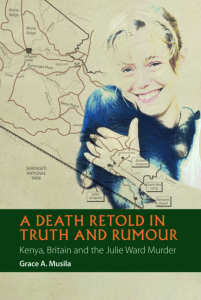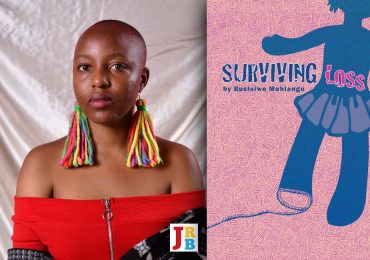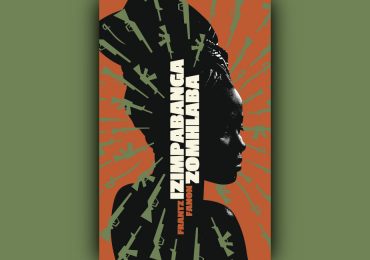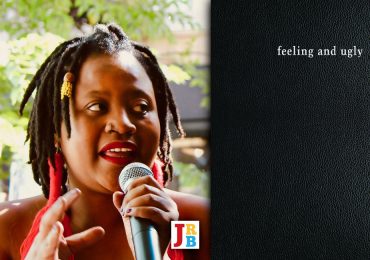A Death Retold in Truth and Rumour: Kenya, Britain and the Julie Ward Murder
Grace A Musila
James Currey 2015
On 7 February 1988 a 28-year-old white British woman and passionate wildlife photographer, Julie Ward, travelled with a group of twenty-five tourists from all over Britain on an overland trip via Spain, crossed the Mediterranean, passed through Morocco, headed south east, and arrived in Nairobi, Kenya on 27 June 1988. Three months later, starting from 6 to 10 September, Ward’s whereabouts were unknown and on the 10th she was reported missing. Her father, John Ward, arrived in Nairobi on the 12th September. After a search in the Maasai Mara Game Reserve, partly burnt remains without a skull were found. About a month later, Ward’s skull was found. In 1992, from January to June, two game wardens were tried for murder and acquitted. Twenty-nine years later, as I write this review, Julie Ward’s killers remain unknown. Reportedly, the investigation continues.
This is the short version of a story that resulted in the publication of three true crime books in 1991: The Animals are Innocent: The Search for Julie’s Killers, by John Ward, father to Julie; A Death in Kenya: The Murder of Julie Ward, by American Michael Hiltzik; and Darkness in Eden: The Murder of Julie Ward, by British writer Jeremy Gavron. All three authors are white males. In 1998, Julie Ward: Gentle Nature, a coffee-table book by Julie’s mother, Jan Ward, compiled from these three books, court transcripts and letters Julie wrote to her family, was published. In 2015—twenty-seven years after Julie’s death—came another book, A Death Retold in Truth and Rumour: Kenya, Britain and the Julie Ward Murder, by Grace Musila, a black Kenyan woman and scholar at Stellenbosch University in South Africa. We learn from Musila’s book that by 1998 John Ward had spent £500 000 in investigative pursuits of justice.

What then about Julie’s death—the protracted investigations, the international nature of the case, the multitudinous entanglements and the location, the Maasai Mara Game Reserve in Kenya—invited so much attention? How it is possible that the killers have still not been identified, tried, found guilty and imprisoned? Musila’s book provides versions of answers to these questions.
In a review for Safundi, Annie Gagiano calls Musila’s book ‘an academic thriller’. I fully agree. Gagiano describes Musila’s book as ‘the product of a decade’s worth of painstaking analysis, wide-ranging research involving both archival work and theoretical readings, and brilliant narratological structuring of her findings‘ (my emphasis). I read the book in December 2016, before I read any reviews. Afterwards, I went in vigorous search of reviews because, first, I was curious about how such an excellent book had been reviewed, and second, because the book induced in me an urgent desire to review it. It was exactly the narratological structuring of her findings that had me turning pages over in sheer amazement and delight—and had me smiling in awe at Musila’s intellectual gymnastics.
In African Studies Review, Carolyn Martin Shaw comments: ‘Exquisitely examined through memoirs, reports, official documents, journals, newspapers articles, blogs, social media, scholarly works, and novels, A Death Retold in Truth and Rumour visits the contact zone between Africans and Europeans and traces unequal relationships from colonialism to the present‘ (my emphasis). It is the unearthing and laying down for all to see of these unequal—I would insert a qualifier, power—relationships that interests me about Musila’s book, at a time when the idea—whose time is now—of decolonising the universities at all levels, including the curriculum, is so high on the verbalised agenda of, for example, the Fees Must Fall movement. At a time such as this, I believe Musila’s book ought to be on the top ten list of the books students and academics should study, write about and reference when putting into practice the idea of decolonising the curriculum.
Musila’s book does not fit with ease in any single discipline, but I would submit that feminism and gender studies, history, international studies, African studies and literature, sociology and creative writing programmes would be among the priority home disciplines for this book. It allows for cross- and trans-disciplinary analyses in ways that few books do. In fact, it demands multidisciplinary engagement because of the essence of its core criticisms. Musila suggests in her numerous and multilayered analyses that it is the holding onto one’s own perspective at the exclusion of many—and often all—others’ perspectives that may have led to the failure to identify, catch and bring the killers to justice and reach closure for the family. It is these spectacular collisions of perspectives that have resulted in such a dramatic and long-drawn-out disaster.
After reading Musila’s introduction, wherein she shares her interest in the case—which I quote in full below—I was unprepared for the exquisiteness of her narrative style. I anxiously suspected, in fact, that her goals might be crushed in the deep and dark mire of the topic(s) in question. I worried that the muddy nature of this subject might interfere with and obfuscate the arguments she needed to make. Put differently, I expected a difficult read.
Broadly speaking, I am interested in three key concerns. First, how narrative works as a critical intervention in understanding social reality, by not only mediating reality, but also attempting to influence its meanings and interpretations. Second, and related, I am interested in the ways in which the Julie Ward case and the layered discourses it inspired offer a critique of rationality, the unity of the subject and its related logocentrism as key tenets of a colonial modernity that continues to mediate metropolitan readings of postcolonial Africa. Third, I am interested in revisiting the seeming tensions between the particularity of local epistemes and their interactions with so-called universal discourses.
Musila explores these three interests in eight coherently-presented and meticulously-argued chapters: Introduction: Versions of Truth; Portrait of an Assassin State; Sex, Gender and the ‘Criminal’ State; Julie Ward’s Death and the Kenyan Grapevine; Wildebeest, ‘Noble Savages’ and Moi’s Kenya: Cultural Illiteracies in the Search for Julie Ward’s Killers; Farms in Africa: Wildlife Tourism, Conservation and Whiteness in Postcolonial Africa; Fault Lines in the Official British Response to the Julie Ward Murder; and Engaging Modernity. Stretching, in more ways than one, over 198 pages, Musila’s narrative artistry sparkles as a proverbial red carpet for her intellectual strides.
My interest in learning about Kenya—its people and its politics—began just over ten years ago when I learned that Helen Nontando (Noni) Jabavu, the subject of my long-term biography project, had lived in Kenya for just over ten years. I immersed myself in Kenyan literature, biographies and books of history in order to get closer to understanding Noni’s context at that time. Musila’s use of novels—and their fictional truths—is particularly impressive in the manner in which it provides more wholesome ways of understanding how narrative works. I remember reading Histories of the Hanged: Britain’s Dirty War in Kenya and the End of Empire, by David Anderson, and understanding with empathy and for the first time the anger that Afrikaners in South Africa have for the British (meaning English-speaking white South Africans of British descent) and the concomitant lingering-to-date-pain. In my other work I have had the opportunity to listen to Afrikaners express the impact of British cruelty on their families. Remembering these anecdotes of pain and Anderson’s book, I understood anew that when the apartheid regime created laws to oppress, marginalise and dehumanise black people in the country of their birth, they also needed the use of extreme violence and cruelty, because this is indeed part of the language of oppressors. The use of violence and the implementation of dehumanising systems form the vocabulary of oppression. This seeming digression will become more relevant later, below.
In almost all the chapters of A Death Retold in Truth and Rumour, there are such loud resonances with the South Africa of today that Julie Ward may as well have been killed in one of South Africa’s world famous and often exclusive game parks. Why? I think because—in South Africa there exists still, to a very large extent, ‘the failure to imagine new grammars of whiteness, independent of the grammars of colonial whiteness‘. I emphasise this because the failure by white South Africans to imagine new grammars of whiteness in the postapartheid era continues to shore up in public debates and conversations. It is obvious that whites continue to use and rely heavily on the apartheid grammar of whiteness. After all, apartheid was called a ‘colonialism of a special type’ in liberation movement parlance. South Africans engaged in constructive conversations about how to decolonise at all levels would benefit from reading this book. Musila surfaces the failures of imagination, in constructing ‘new grammars of whiteness’, in instructive ways for the decolonisation movement.
In her chapter ‘Portrait of an Assassin State’, Musila explores ‘how violence and assassination as important syllables in the grammar of state power were part of the British colonial endowment to the newly independent Kenyan government, which, in turn, refined and adapted this brutal inheritance to the needs and greeds of successive post-independence regimes in Kenya to date’. Certainly the killing by state police of protesting miners in Marikana in 2012 felt like an apartheid endowment to the then eighteen-year-old new South Africa. The violence witnessed recently in parliament is another case in point. Reading this chapter almost felt like a warning posed as a question. Might we also see, in future, state engineered assassinations that will remain as so-called ‘unsolved murders’ over decades? Might this indeed become our ‘brutal inheritance’?
At a personal level I was reminded of the death, in 1969, of Tom Mboya—one of the assassinations discussed in the book—who was the Secretary General of Kenya’s ruling Party, KANU, and Minister for Economic Planning and Development. My father and his brother were so enraged by it, I remember them talking about it for hours on end. In my preteen years, my confusion was as intense as their rage—why did they care about the death of someone from so far away, when people were dying all the time in South Africa? I understand now that the rumours must have meandered their way south via the Kenyan grapevine with such efficiency that my fathers were fully engaged in the story and equally distressed by the political implications of Mboya’s death.
In ‘Sex, Gender and the “Criminal” State’, Musila analyses the use of the tropes around (a) victims of crime, (b) martyrs and (c) women of loose sexual mores to demonstrate how none of these ways of seeing helped get closer to the truth. In fact, because of the dogged unexamined need to view Julie Ward as one, two or all of these, the truth was lost and today is a mirage. We are reminded that in a patriarchal society sex and gender continue to serve as easy catch-alls for understanding women. These stereotypes about women reign in many patriarchal societies—to the exclusion of other ways of seeing. Oppressors’ strategies of othering those they see as ‘below’ them may begin with seemingly innocent stereotyping, but often they leap to the justification of brutal violence and murder.
In ‘Farms in Africa: Wildlife Tourism, Conservation and Whiteness in Postcolonial Africa’, I was reminded of yet another resonance with the South Africa of today: Njabulo Ndebele’s essay ‘Game Lodges and Leisure Colonialists’. In this essay Ndebele asserts, ‘Colonial leisure is the pleasure of risk without danger, or risk with the guarantee of safety’. He goes on to question whether safety could ever be guaranteed. I imagine Julie Ward must have taken this safety for granted, had looked forward to ‘the pleasure of risk without danger’, ahead of her ‘expedition’ to the ‘bush’. Ndebele ends his essay with these words: ‘there is no peace for those caught in the process of becoming’. This could very well be the conclusion for all the characters in Musila’s book. For all of them, it seems to me, their inability to open up to other ways of thinking and imagining led to the family not finding peace about Julie’s death. All the players on this messy field are clearly ‘caught in the process of becoming’. Have any of them found peace following this unresolved murder?
Most fascinating, as well—at least for me, whose reading of Kenyan literature did not immediately pick up on the historical and contextual references—is the way Musila connects contemporary Kenyan literature with the Julie Ward murder case. I now have the need to reread Ngũgĩ wa Thiongo’s A Grain of Wheat and Devil on the Cross. I will now reprioritise reading Yvonne Adhiambo Owuor’s award winning Dust, which has been sitting on my bookshelf since meeting and listening to her talk in 2015. Musila mentions many other novels I had not heard of and two especially, Killing Sahara by Mukoma wa Ngugi and The Night Bob Died by Sam O. Okello, whet my reading appetite. Enthrallingly, Musila draws clear connecting and connotative lines between the novels and the murder.
Musila’s book is marinated in the theories of scholars from the African continent and the world. I felt as if she was holding me by my hand, introducing me to these theories, presenting perspectives to some I had not engaged with and showing me, detail by detail, the smooth curves and sharp corners of her arguments. When the route to the conclusions meandered, her hand definitely held tighter.
Reading Musila’s book is like listening to the words of a wise one telling you about ways of being free. In her final chapter, ‘Engaging Modernity’, Musila suggests that had everyone concerned freed themselves of their prejudices, extricated themselves from their closely held and protected perspectives, opened their ears to listen more and their eyes to see further and wider, and committed themselves to working together for the noble course of justice, this murder would have been solved. But a spectacular collision of ideologies and vested interests served to work against the realisation of justice. Truths of the various types discussed in this book have not led to the truth of the killing. We realise from reading Musila that the dance between rumour and truth is worth watching and, hopefully, we can learn from its dazzle.
- Makhosazana Xaba is a Patron of The JRB
Index
Authors
- Nontando (Noni) Jabavu
Books
- Histories of the Hanged: Britain’s Dirty War in Kenya and the End of Empire by David Anderson
- Darkness in Eden: The Murder of Julie Ward by Jeremy Gavron
- A Death in Kenya: The Murder of Julie Ward by Michael Hiltzik
- A Death Retold in Truth and Rumour: Kenya, Britain and the Julie Ward Murder by Grace Musila
- The Night Bob Died by Sam O. Okello
- Dust by Yvonne Adhiambo Owuor
- Julie Ward: Gentle Nature by Jan Ward
- The Animals are Innocent: The Search for Julie’s Killers by John Ward
- Killing Sahara by Mukoma wa Ngugi
- A Grain of Wheat by Ngũgĩ wa Thiongo
- Devil on the Cross by Ngũgĩ wa Thiongo
Essays
- ‘Game Lodges and Leisure Colonialists’ by Njabulo Ndebele, collected in Fine Lines from the Box (1999)
Journals
- Safundi
- African Studies Review
Topics
- Fees Must Fall
- Assassination of Tom Mboya
- The Marikana Massacre





